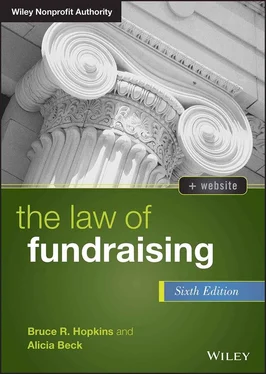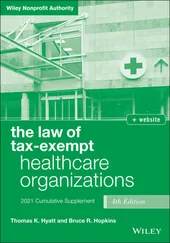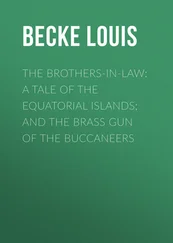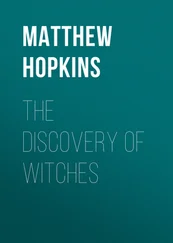Bruce R. Hopkins - The Law of Fundraising
Здесь есть возможность читать онлайн «Bruce R. Hopkins - The Law of Fundraising» — ознакомительный отрывок электронной книги совершенно бесплатно, а после прочтения отрывка купить полную версию. В некоторых случаях можно слушать аудио, скачать через торрент в формате fb2 и присутствует краткое содержание. Жанр: unrecognised, на английском языке. Описание произведения, (предисловие) а так же отзывы посетителей доступны на портале библиотеки ЛибКат.
- Название:The Law of Fundraising
- Автор:
- Жанр:
- Год:неизвестен
- ISBN:нет данных
- Рейтинг книги:4 / 5. Голосов: 1
-
Избранное:Добавить в избранное
- Отзывы:
-
Ваша оценка:
- 80
- 1
- 2
- 3
- 4
- 5
The Law of Fundraising: краткое содержание, описание и аннотация
Предлагаем к чтению аннотацию, описание, краткое содержание или предисловие (зависит от того, что написал сам автор книги «The Law of Fundraising»). Если вы не нашли необходимую информацию о книге — напишите в комментариях, мы постараемся отыскать её.
The Law of Fundraising
The Law of Fundraising
The Law of Fundraising — читать онлайн ознакомительный отрывок
Ниже представлен текст книги, разбитый по страницам. Система сохранения места последней прочитанной страницы, позволяет с удобством читать онлайн бесплатно книгу «The Law of Fundraising», без необходимости каждый раз заново искать на чём Вы остановились. Поставьте закладку, и сможете в любой момент перейти на страницу, на которой закончили чтение.
Интервал:
Закладка:
The legislation that subsequently passed the 109th Congress (2005–2006) 83 did not address any of the foregoing recommendations. These recommendations have not been subsequently considered by Congress.
NOTES
1 1. To a lesser extent, the boundaries of these laws are also somewhat set by the scope of the terms solicit (see § 3.2(c)) and contribution (see § 3.2(e)).
2 2. See § 2.1.
3 3. See Tax-Exempt Organizations, Part Three; Charitable Giving, § 2.2.
4 4. IRC §§ 501(c)(3), 509(a)(1) (IRC § 170(b)(1)(A)(i)-(vi)), and 509(a)(2)-(4).
5 5. IRC § 501(c)(4). See Tax-Exempt Organizations, Chapter 13.
6 6. Id., Chapter 17.
7 7. A problem with this type of statutory exclusion is that it invites the argument that the excluded solicitations would be embraced by the statute absent the special exception.
8 8. E.g., Wendy L. Parker Rehabilitation Foundation, Inc. v. Commissioner, 52 T.C.M. 51 (1986).
9 9. For a discussion as to whether an organization that exists solely for the benefit of its membership can qualify as a charitable organization, see Commonwealth v. Association of Community Organizations for Reform Now, 463 A.2d 406 (Pa. 1983). Also, Packel v. Frantz Advertising, Inc., 353 A.2d 492 (Pa. 1976).
10 10. See § 3.2(a).
11 11. A discussion of these points appears in Packel v. Frantz Advertising, Inc., 353 A.2d 492 (Pa. 1976).
12 12. See § 3.2(a).
13 13. See § 3.2(b).
14 14. State v. Blakney, 361 N.E. 2d 567, 568 (Ohio 1975).
15 15. Id. Likewise Brown v. Marine Club, Inc., 365 N.E. 2d 1277 (Ohio 1976).
16 16. As to the latter, see § 3.2(e).
17 17. See § 5.5.
18 18. See Charitable Giving, § 7.18.
19 19. See §§ 3.2(i), 4.7.
20 20. See § 3.2(d).
21 21. Commissioner v. Duberstein, 363 U.S. 278, 285 (1960), quoting from Commissioner v. LoBue, 351 U.S. 243, 246 (1956).
22 22. United States v. American Bar Endowment, 477 U.S. 105, 116–117 (1986).
23 23. Robertson v. United States, 343 U.S. 711, 714 (1952).
24 24. United States v. American Bar Endowment, 477 U.S. 105, 118 (1986).
25 25. Hernandez v. Commissioner, 490 U.S. 680, 692 (1989).
26 26. Id.
27 27. See Charitable Giving, § 2.1.
28 28. Attorney General v. International Marathons, Inc., 467 N.E. 2d 51 (Mass. 1984).
29 29. See § 3.5(i).
30 30. See §§ 3.5, 4.8.
31 31. See § 3.3.
32 32. See § 3.5.
33 33. See § 3.2(h).
34 34. See § 7.11(a).
35 35. See §§ 3.2(a), 3.5.
36 36. A registration regime does not require the same level of constitutional law protection as does a licensing regime. E.g., Illinois ex rel. Madigan v. Telemarketing Associates, Inc., 538 U.S. 600 (2003); Dayton Area Visually Impaired Persons, Inc. v. Fisher, 70 F.3d 1474 (6th Cir. 1995). Cases pertaining to a license requirement include Thomas v. Chicago Park District, 534 U.S. 316 (2002); Forsyth County v. Nationalist Movement, 505 U.S. 123 (1992).
37 37. In most instances, this classification will be as an organization that is tax exempt under IRC § 501(a) because it is described in IRC § 501(c)(3). In general, see § 3.2(b).
38 38. See §§ 3.2(g), 3.2(h).
39 39. See § 4.6.
40 40. See § 4.19.
41 41. See § 4.2 for a discussion of the constitutionality of this type of fee arrangement.
42 42. See § 4.4.
43 43. See § 3.7.
44 44. The development of this unified registration statement is a welcome one. This advance toward simplicity and uniformity is somewhat marred by the additional supplemental statements and varying annual reports.
45 45. See § 3.5.
46 46. See § 3.7.
47 47. A court upheld a state statute requiring religious institutions to apply for an exemption from the state's charitable solicitation act, rejecting the contention that the application scheme constituted an impermissible prior restraint on speech (Free the Fathers, Inc. v. State of Tennessee, 2008 WL 360612 (Tenn. Ct. App. 2008)).
48 48. Because of constitutional law constraints and as a practical matter, the law does not normally attempt a definition of the term church. See Tax-Exempt Organizations, § 10.1. If an organization is regarded as a church or closely related organization for federal income tax purposes (IRC § 170(b)(1)(A)(i)), it presumably is treated the same for state fundraising regulation purposes.
49 49. IRC § 508(c)(1)(A), which also applies with respect to integrated auxiliaries of churches, and conventions or associations of churches.
50 50. Foundations functioning on behalf of educational institutions that are operated by state governments are expressly recognized by the federal tax law, as concerns public charity and charitable donee classifications (IRC § 170(b)(1)(A)(iv)). See Tax-Exempt Organizations, § 12.3(b)(v). Foundations functioning on behalf of other educational institutions are also public charities, often publicly supported ones (IRC §§ 170(b)(1)(A)(vi) (IRC § 509(a)(1)) and 509(a)(2)). See Tax-Exempt Organizations, § 12.3(b)(i), (iv). Some of these foundations in the second category are supporting organizations (IRC § 509(a)(3)), although they may meet a test as to public support. See Tax-Exempt Organizations, § 12.3(c).
51 51. As to this point, an analogy may be made to the federal securities laws, which differentiate between regulated sales of securities to the public and somewhat unregulated private offerings of securities.
52 52. One court held that a state's charitable solicitation act was inapplicable to private foundations, for the reason that the “obvious intent” of the statute is “to regulate those charitable organizations, who solicit or accept contributions from persons or corporations outside the charitable entity” (Estate of Campbell v. Lepley, 532 P.2d 1374, 1375 (Okla. 1975)) (emphasis added).
53 53. This type of provision has been applied in the courts (e.g., Salvation Mission Army Workers Holy Orthodox Christian Church v. Commonwealth, 383 A.2d 995 (Pa. 1978); Blenski v. State, 245 N.W.2d 906 (Wis. 1976)).
54 54. See § 6.15.
55 55. These provisions are of dubious legality (see § 4.5).
56 56. Principally, the federal annual information return (Form 990). In general, see § 5.9, Chapter 7.
57 57. This exemption, which of course exempts all or nearly all charitable entities, is available for all organizations that are tax exempt by reason of IRC § 501(c)(3).
58 58. See § 4.2(g).
59 59. A state may have an alternative to the use of bonds, in that a certificate of deposit, letter of credit, or U.S. obligation can be filed in lieu of a bond. This approach allows investment assets to be pledged while not disturbing the underlying investment. It eliminates the expense of premiums, and reduces the time and expense associated with renewals of bonds.
60 60. See § 3.2(h).
61 61. See § 4.1.
62 62. See § 4.3.
63 63. Kentucky State Police Professional Association v. Gorman, 870 F. Supp. 166 (E.D. Ky. 1994).
64 64. National Federation of Nonprofits v. Lungren (N.D. Cal., order issued Mar. 29, 1995).
65 65. See § 4.15.
66 66. See § 3.2(h).
67 67. These requirements are discussed in § 8.6.
68 68. This is because this type of charitable solicitation is not usually regarded as doing business within a state (see infra note 78).
69 69. This type of rule has been upheld in the courts (e.g., Lewis v. Congress of Racial Equality, 274 S.E.2d 287 (S.C. 1981); Blenski v. State, 245 N.W. 2d 906 (Wis. 1976); People v. Caldwell, 290 N.E.2d 279 (Ill. 1982)). In Blenski, the court stated that the “crime of unauthorized use of names is directed at protecting the public against being misled and not protecting the person whose name is used. This purpose does not require that liability for this crime be imposed for each individual person whose name is used, particularly where … the unauthorized uses are simultaneously committed” (at 911).
Читать дальшеИнтервал:
Закладка:
Похожие книги на «The Law of Fundraising»
Представляем Вашему вниманию похожие книги на «The Law of Fundraising» списком для выбора. Мы отобрали схожую по названию и смыслу литературу в надежде предоставить читателям больше вариантов отыскать новые, интересные, ещё непрочитанные произведения.
Обсуждение, отзывы о книге «The Law of Fundraising» и просто собственные мнения читателей. Оставьте ваши комментарии, напишите, что Вы думаете о произведении, его смысле или главных героях. Укажите что конкретно понравилось, а что нет, и почему Вы так считаете.












